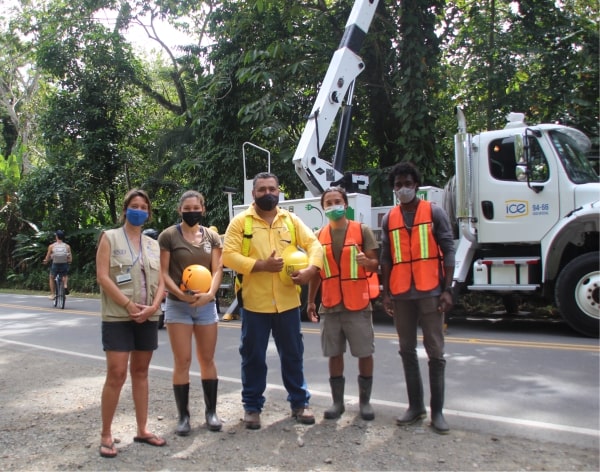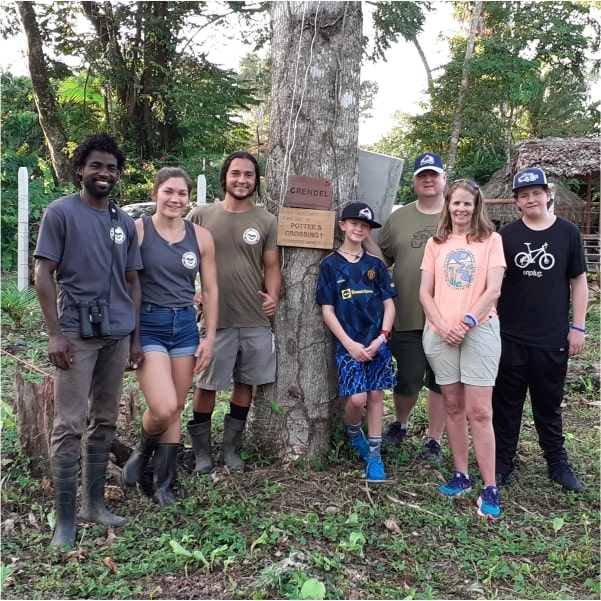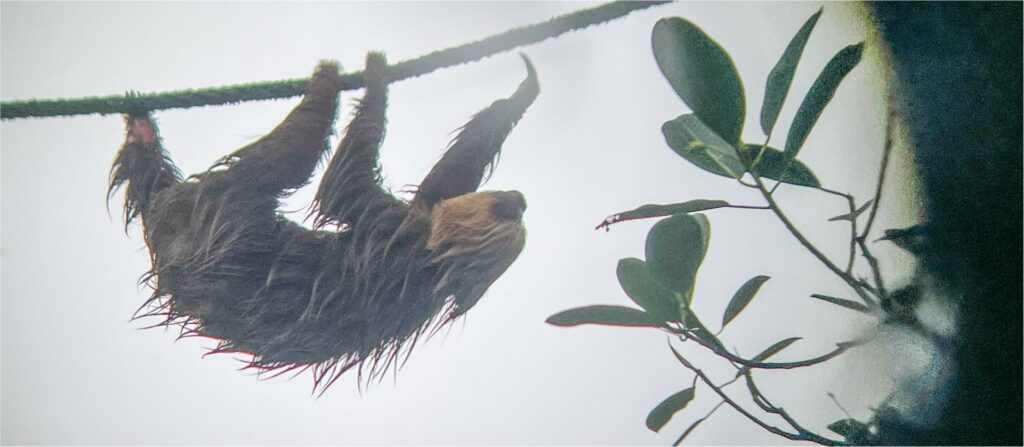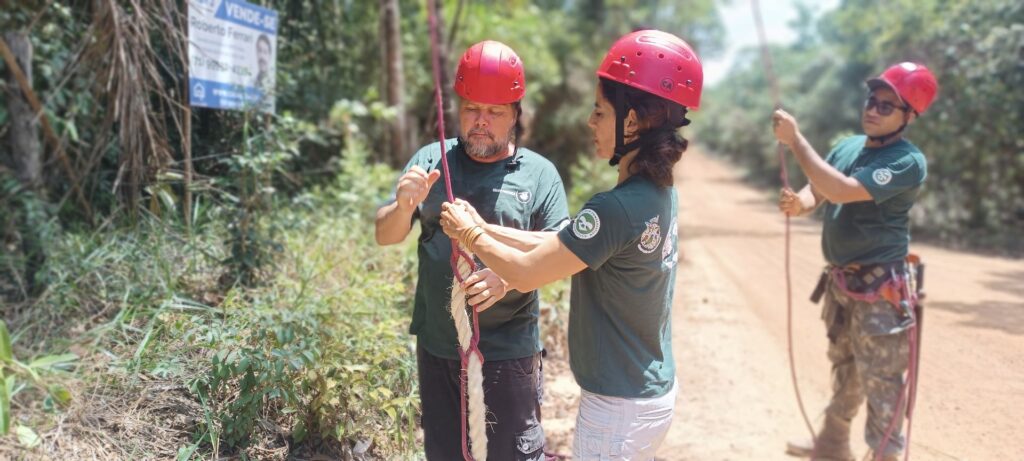Sloth Crossings Update: January-April
Hello Sloth Crossings Community! In this update, we’ll be covering the highlights of the project from January through April. We’re proud to say that the project continues to expand to new levels and new areas!
January: The Month of Covid
In January approximately 90% of our team either tested positive for COVID or had to quarantine due to close contact with someone who had. It was a bit of a shock for this area, which up until now had seemed to skate by the pandemic in our happy little tropical bubble, isolated from the worst of it by our limited access to the outside world and healthy, fresh outdoor living.
February: Collaboration is Key
In February we finally started working with ICE (the Costa Rican electric company, Instituto Costarricense de Electricidad) to coordinate the installation of bridges above the main road and secondary streets. Installation in these areas requires the powerlines to be deactivated until the bridge is safely anchored on either side of the line.

Since the electric grid in this area is less like a grid and more like a straight line, everyone downstream of this project has no electricity until it’s finished, which can take a few hours. So far we installed three sloth crossings over electrical lines in Playa Chiquita and five in Playa Negra–both of which are important neighborhoods with high levels of urbanization.
Problem Areas
Wildlife crossings help sloths and other animals avoid two of the three biggest sloth killers in the South Caribbean: dog attacks, and powerlines.

The survival rate for animals that have been electrocuted is very low, but insulating power lines requires a lot of time and funds, and as a public company ICE’s budget is limited. The government recognizes this problem and has already invested over $400,000 US in materials to insulate their power lines and transformers! However, this just gets the project started—more funds are needed to see it through to completion.
Since 2019 SloCo has provided over $10,000 to buy the raw materials to insulate power lines and transformers, and we expect to match this number again this year.
March: Record Day!
On March 16th the Bridges Team left the office early in the morning to go to a property in Cahuita, where the plan was to install three or four bridges and plant some trees. Not only did we achieve this, but we also set a new record! The team managed to install five bridges in a single day and planted 30 sloth-friendly trees at the same time!

Launching the Camera Trap Project
SloCo achieved another big goal this year with the start of our new research program: the Camera Trap Project. Thanks to our Sloth Crossing Community we are very excited to begin research on the usage of our bridges. Special thanks to the Krueger Family who brought the cameras down to Costa Rica in their luggage and made this launch possible!

At the moment we have 13 camera traps covering over 150 bridges. This is an excellent start, but we have even more brides being used by even more animals, and we want pictures of all of them! In the meantime, we are extremely grateful that we are able to make a start with the ones we have. Keep an eye out for our upcoming fundraiser for more camera traps, all and any donations are very much appreciated!

The first law of the jungle is that The Jungle Eats All Things. The heat, humidity, and wildlife will make short work of many types of cameras, but our research has shown that the camera traps that work best in the Caribbean climate and circumstances are:
- HF2X HyperFire 2 Covert IR Camera $399
- Browning Defender Wireless Cellular Trail Camera $299
- Bushnell Core DS-4K No Glow Trail Camera $199
April: Sloth Crossing Team goes to the Pacific!
The Team just got back from a five-day excursion to Ojochal and Uvita on the South Pacific Coast of Costa Rica. We installed eight bridges, including three in Marino Ballena National Park, one of the most ecologically important protected areas of the country.

It is great to be expanding the Sloth Crossing Project to more areas of the country! Special thanks to Oscar from the Reserva Playa Tortuga, Jonathan from SINAC of the National Park Marino Ballena, and Shannon & Micki of Ojochal who contacted us and helped so much with coordinating everything.

Expanding Our Borders
Speaking of taking the Sloth Crossing Project even further abroad, we have begun collaboration with an organization in Praia do Forte, in the NorthEast of Brazil, to fund the installation of wildlife bridges adjacent to Sapiranga Reserve.

This is an important habitat for the endangered maned sloths and is the same area where we tagged eight sloths last year as part of a different scientific research project.
Sloths and Monkeys Using Bridges
Last but not least, here is some footage of sloths and monkeys using some of the Sloth Crossing Bridges these past few weeks!
- Two-Fingered sloth using the Bridge SC-50

- Howler Monkey using bridge SC-66

- Howler monkey using the bridge installed in the Maritime Zone SC-93

- Howler monkey on the bridge SC-110 / SC-111 at Playa Chiquita

- Two-fingered sloth using bridge SC-122 at Tasty Waves Cantina

- Howler monkeys using a bridge over the main road ( SC-122 bis) by Tasty Waves Cantina

- Three-fingered sloth using SC-058

- Howler monkey with her baby spotted at Tortuguero, on SC-81

This map shows all of the places where we have installed Sloth Crossing wildlife bridges (blue) and planted trees through our reforestation efforts (green) since March 2019.
We hope you enjoyed this update, and stay tuned for the exciting next steps of this journey. Thank you so much for your incredible support of this project!
Pura Vida!

Tamara Avila
Sloth Crossings Project









